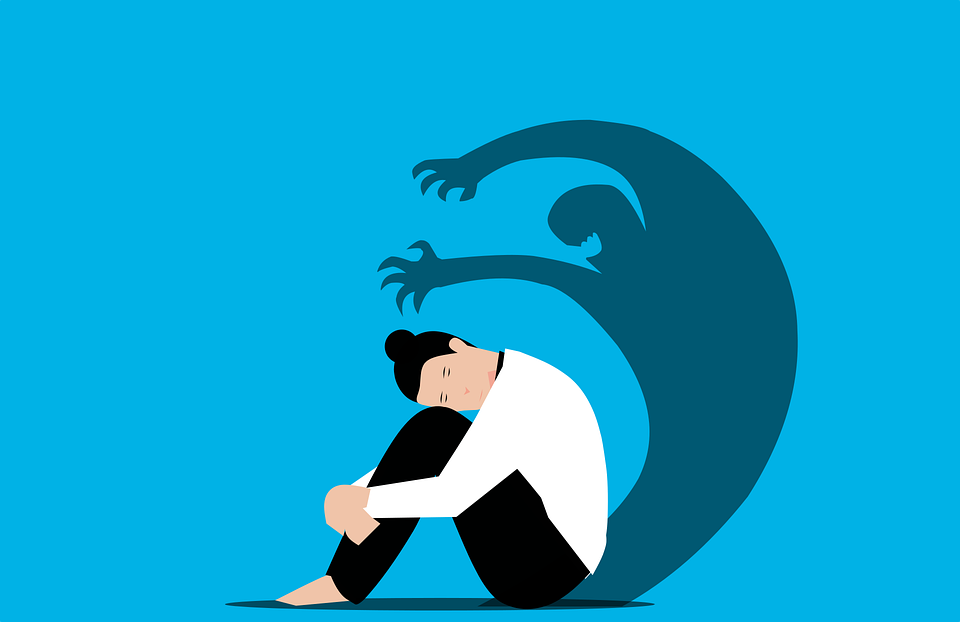If you’ve found your way here, it might be because you’ve been carrying a quiet, heavy weight inside. One made up of self-doubt, self-criticism, and that persistent voice that tells you you’re not enough. Sometimes it murmurs in the background during a meeting, sometimes it gets louder when you make a mistake, and sometimes it shows up in the mirror when you’re just trying to get ready for your day. My aunt calls this voice “The imposter”, I like to refer to it as “Balthazar”– because somehow, giving it a name makes it a little less powerful.
Low self-esteem is one of the most common struggles people bring to therapy (Orth & Robins, 2014). And while it can feel like a permanent part of who you are, it’s not. With care, compassion, and the right support, self-esteem can grow and heal.
Let’s talk about what low self-esteem is, why it happens, how it impacts life, and how counselling can help you begin to feel a little lighter, a little freer, and maybe even kinder to yourself.
What Is Low Self-Esteem?
At its core, self-esteem is simply the way we evaluate and value ourselves. Healthy self-esteem means being able to see your worth realistically: you know you’re not perfect (no one is), but you also know you’re valuable, capable, and deserving of love and respect (Mruk, 2013).
Low self-esteem, on the other hand, can feel like living with Balthazar—the inner bully who never seems to take a day off. He zeroes in on every little mistake and magnifies it until it feels overwhelming, sweeps your accomplishments under the rug as though they don’t matter, and works hard to convince you that you’ll never measure up. Over time, Balthazar’s voice can get so loud it drowns out your own, leaving you disconnected from the truth of who you really are.
This isn’t humility—it’s harshness. Instead of offering yourself the benefit of the doubt, you may find yourself pulled again and again toward self-criticism, guilt, or shame.

Signs of Low Self-Esteem
Maybe you’re reading this and thinking, okay, but how do I know if I really have low self-esteem? Here are some common signs:
- Negative self-talk: Constantly calling yourself names like “stupid,” “lazy,” or “not enough.”
- Difficulty accepting compliments: Someone says, “You did a great job,” and you reply, “Oh, it was nothing.”
- Perfectionism or avoidance: Either pushing yourself to impossible standards or avoiding tasks altogether because you’re afraid of failing.
- Comparing yourself to others: Social media doesn’t help. Everyone else’s highlight reel feels like proof that you’re falling behind.
- Difficulty setting boundaries: Saying yes when you want to say no, because you don’t want to disappoint others.
- Fear of rejection: Constantly worrying what others think of you.
If these resonate, chances are your “Balthazar” has been working overtime.
Causes of Low Self-Esteem
Low self-esteem doesn’t appear out of nowhere. It usually has roots in our history and experiences:
- Early childhood experiences: Growing up with criticism, neglect, or emotional absence can shape how we see ourselves (Harter, 2012).
- Bullying or rejection: Experiences of being teased or excluded can leave deep scars.
- Trauma: Emotional, physical, or sexual trauma often damages one’s sense of worth (DePrince et al., 2009).
- Cultural or societal pressures: Beauty standards, achievement culture, and systemic oppression all play roles.
- Mental health conditions: Depression, anxiety, and chronic stress can all lower self-esteem.
The truth? None of these are your fault. They may explain why you struggle with self-worth, but they do not define you.
The Impact of Low Self-Esteem on Your Life
Living with low self-esteem is exhausting. It can affect nearly every part of your life:
- Relationships: You might settle for less than you deserve or struggle to trust others.
- Work or school: You may hold back from opportunities, fearing you’ll fail.
- Mental health: Low self-esteem is closely linked to depression, anxiety, and social withdrawal (Sowislo & Orth, 2013).
- Physical health: Research even shows a connection between low self-esteem and poorer physical health outcomes (Trzesniewski et al., 2006).
- Daily joy: Perhaps most painfully, it can rob you of everyday joy. Instead of feeling proud, connected, or excited, you may live with constant self-doubt.
Living with low self-esteem is exhausting. It’s like letting Balthazar narrate your life story, only he’s the most unreliable narrator you’ve ever met—one who ignores your wins and highlights your stumbles.

How Counselling Can Help
Here’s the good news: self-esteem is not set in stone. Research shows it can change, even in adulthood (Orth, Erol, & Luciano, 2018).
Counselling offers a safe, compassionate space to explore your inner world. A counsellor can help you:
- Challenge negative beliefs: That inner critic voice? Therapy helps you question whether it’s telling the truth.
- Process root causes: Healing past wounds frees you to build a different future.
- Learn self-compassion: Yes, you can practice being kinder to yourself (Neff, 2011).
- Build skills: From assertiveness to mindfulness, therapy equips you with practical tools.
- See yourself differently: Sometimes, we need someone else to hold up a clearer mirror until we can see ourselves as we truly are.
Effective Modalities for Low Self-Esteem
Different therapeutic approaches can be helpful, depending on your unique story. Some commonly used ones include:
- Cognitive Behavioural Therapy (CBT)
CBT helps you identify and reframe unhelpful thoughts. Instead of, “I always mess things up,” you can learn to notice evidence of your competence and resilience (Beck, 2011).
- Emotion-Focused Therapy (EFT)
Many people with low self-esteem carry unprocessed emotions—shame, sadness, anger. EFT creates space to feel and transform those emotions safely (Greenberg, 2011).
- Narrative Therapy
Narrative therapy invites you to look at your problems as separate from who you are. Instead of saying “I am the problem,” you begin to see “I have a problem, and it’s not the whole of me.” Sometimes that means giving your struggles a name and a character—like “Balthazar,” the inner bully. By turning self-criticism into a character outside yourself, you can challenge it, talk back to it, and write a different story about who you are and what you deserve (White & Epston, 1990).
- Psychodynamic Therapy
This approach explores unconscious beliefs formed in early relationships that still shape self-worth today (Shedler, 2010).
- Mindfulness-Based Therapies
Mindfulness interrupts spirals of negative self-talk and teaches presence, acceptance, and balance (Keng, Smoski, & Robins, 2011).
- Internal Family Systems (IFS)
Many people with low self-esteem have “parts” of themselves stuck in self-criticism. IFS helps you relate differently to those parts and nurture a more compassionate core self (Schwartz, 2021).
- EMDR (Eye Movement Desensitization and Reprocessing)
If trauma is at the root of low self-esteem, EMDR can help process painful memories and reduce their impact on self-worth (Shapiro, 2017).
Conclusion: You Don’t Have to Do This Alone
Low self-esteem can make you feel small, invisible, or unworthy. But it is not the truth of who you are. You are worthy of compassion, care, and a life that feels rich and meaningful.
Counselling can be the place where you begin to rebuild that relationship with yourself. Not by forcing fake positivity or ignoring your pain, but by learning to see your worth clearly—maybe for the very first time.
So, if you’re ready to tell Balthazar to pack his bags and stop bossing you around, we’d be honoured to help. Reach out to us today at 604-229-4887 or info@lovethistherapy.com.

References
- Beck, J. S. (2011). Cognitive behavior therapy: Basics and beyond (2nd ed.). Guilford Press.
- DePrince, A. P., Chu, A. T., & Pineda, A. S. (2009). Links between trauma exposure and adolescent self-esteem. Journal of Traumatic Stress, 24(6), 736–743. https://doi.org/10.1002/jts.20486
- Greenberg, L. S. (2011). Emotion-focused therapy. American Psychological Association.
- Harter, S. (2012). The construction of the self: Developmental and sociocultural foundations (2nd ed.). Guilford Press.
- Keng, S. L., Smoski, M. J., & Robins, C. J. (2011). Effects of mindfulness on psychological health: A review. Clinical Psychology Review, 31(6), 1041–1056. https://doi.org/10.1016/j.cpr.2011.04.006
- Mruk, C. (2013). Self-esteem and positive psychology: Research, theory, and practice (4th ed.). Springer.
- Neff, K. D. (2011). Self‐compassion, self‐esteem, and well‐being. Social and Personality Psychology Compass, 5(1), 1–12. https://doi.org/10.1111/j.1751-9004.2010.00330.x
- Orth, U., & Robins, R. W. (2014). The development of self-esteem. Current Directions in Psychological Science, 23(5), 381–387. https://doi.org/10.1177/0963721414547414
- Orth, U., Erol, R. Y., & Luciano, E. C. (2018). Development of self-esteem from age 4 to 94 years. Psychological Bulletin, 144(10), 1045–1080. https://doi.org/10.1037/bul0000161
- Schwartz, R. (2021). No bad parts: Healing trauma and restoring wholeness with the Internal Family Systems model. Sounds True.
- Shedler, J. (2010). The efficacy of psychodynamic psychotherapy. American Psychologist, 65(2), 98–109. https://doi.org/10.1037/a0018378
- Shapiro, F. (2017). Eye movement desensitization and reprocessing (EMDR) therapy: Basic principles, protocols, and procedures (3rd ed.). Guilford Press.
- Sowislo, J. F., & Orth, U. (2013). Does low self-esteem predict depression and anxiety? Psychological Bulletin, 139(1), 213–240. https://doi.org/10.1037/a0028931
- Trzesniewski, K. H., Donnellan, M. B., Moffitt, T. E., Robins, R. W., Poulton, R., & Caspi, A. (2006). Low self-esteem during adolescence predicts poor health, criminal behavior, and limited economic prospects during adulthood. Developmental Psychology, 42(2), 381–390. https://doi.org/10.1037/0012-1649.42.2.381



